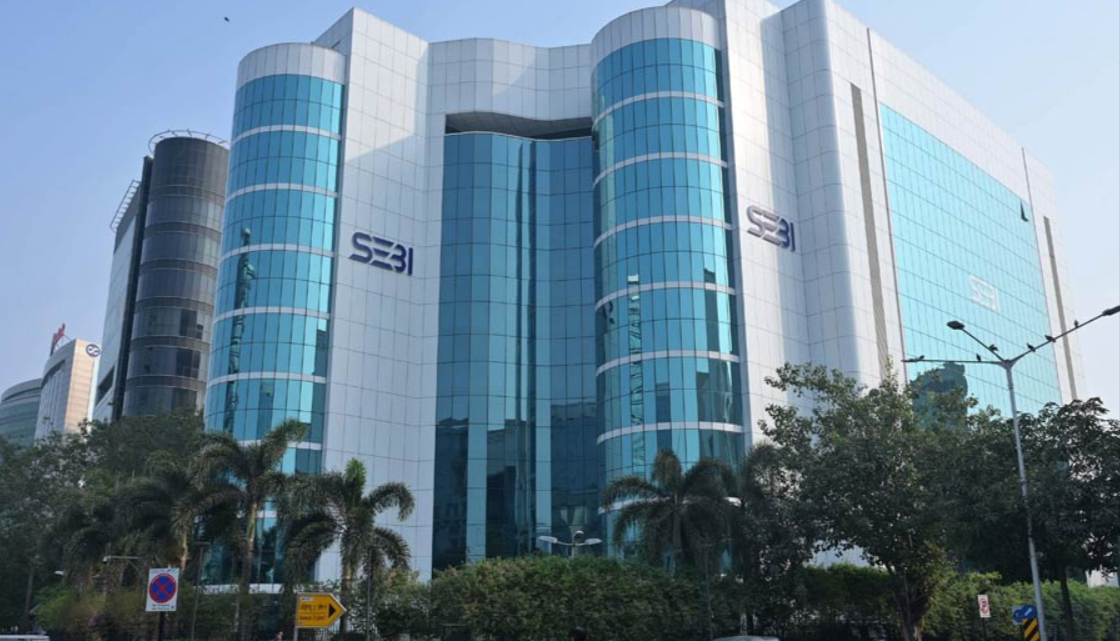Securities and Exchange Board of India (SEBI)
The Securities and Exchange Board of India (SEBI) is a controller body responsible to regulate the securities and commodities market in India. During the 1980s, when the capital market was emerging as a sensation among urban people in India, there came various discrepancies and malpractices along with it. To address such problems and protect the interests of investors, the Government of India, under its finance ministry, enacted a law to form SEBI in 1992.
Headquartered in Banda Kurla complex in Mumbai, SEBI has several regional offices throughout India such as New Delhi for the northern zone, Kolkata for the eastern zone, Chennai for the Southern zone, Ahmedabad for the Western zone, besides local offices in Jaipur, Bangalore, Guwahati, Patna, Kochi, Chandigarh, etc.
Until the creation of SEBI, the financial market was regulated by Capital Issues (Control) Act, 1947 which was enacted before India’s Independence. For a long time, there was felt a need to amend provisions of the old law that could be relevant with current perspectives.
Core Concept
To abolish malpractices, develop the capital market, and protect the interests of investors, in 1988, Sebi was constituted as the regulator of the securities market in India. Initially, it was constituted as a non-statutory body without any statutory power.
Following the passage of the SEBI Act by Parliament on 30 January 1992, it was given autonomous and statutory powers.
On April 12, 1992, SEBI was founded as passing the ‘Securities and Exchange Board Act 1992’ by the Government of India.
In 1999, after amendment in the SEBI Act 1992, collective investment policies have been brought under the ambit of SEBI with few exceptions such as Chit Funds, ‘Nidhi’, and Cooperatives schemes.
Structure of SEBI
The board of SEBI consists of nine members. Among this one is chairman, one member is appointed by the central bank i.e. Reserve Bank of India. Remaining among seven members, two are appointed by Finance Ministry and five are hailed from central Government of India –
- One Chairman of the board: appointed by the Union Government of India
- One Board member: appointed by the Reserve Bank of India
- Two Board members: come from the Finance Ministry of India
- Five Board members: elected by the Union Government of India and among these five, three must be the whole-time members.
In addition to undertaking and overseeing the board, the chairman is also responsible to look into the Vigilance, Communication, and Internal Inspection Department, etc.
Organizational Structure
There are whole-time members in the organizational structure who are four in numbers. These members are allocated with various departments that they are responsible to oversee. Each department has its own executive director who is accountable to report to their respective whole-time members. The tenure of a whole-time member ends after 3 years or if he/she attains the age of 65 years, whichever happens first.
Associated Bodies & Departments
‘Securities and Exchange Board of India’ consists of more than 25 departments such as Corporation Finance Department (CFD), Information Technology Department (ITD), Foreign Portfolio Investors and Custodians (FPI&C), Investment Management Department (IMD), Treasury & Accounts Divisions (T&A), Legal Affair Department, Department of Economic and Policy Analysis (DEPA-I, II, & III), and National Institute of Securities Market (NISM), etc.
| Name | Designation | Background |
| Ajay Tyagi | Chairman | IAS, 1984
Additional Secretary (Department of Economic Affairs), Ministry of Finance, Government of India |
| S. K. Mohanty | Whole-time Member | IRS, 1991 batch,
Former Executive Director, ‘Securities and Exchange Board of India’, and has looked after various departments |
| Anant Barua | Former Executive Director, SEBI and has looked after various departments such as Investment Management Department, Corporation Finance Department, etc. | |
| Madhabi Puri Buch | – | |
| Gurumoorthy Mahalingam | – | |
| M. Rajeshwar Rao | Part-time Member | Deputy Governor, Reserve Bank of India |
| Anand Mohan Bajaj | Additional Secretary, Department of Economic Affairs, Ministry of Finance, Government of India | |
| K. V. R. Murty | Joint Secretary, Ministry of Corporate Affairs, Government of India | |
| V. Ravi Anshuman | Professor, Indian Institute of Management, Bangalore |
Dr. S. A. Dave was appointed as the first chairman of the Securities and Exchange Board of India from 12 April 1988 to 23 August 1990. But during the enactment of the SEBI Act in 1992, G. V. Ramakrishna (Aug 1990-Jan 1994) was the chairman of the board.
Primary Committees
SEBI has constituted several committees to regulate the financial market and to ensure the proper functioning of stock exchanges by facilitating a healthy business environment. A few of these are such as:
- Primary Market Advisory Committee (PMAC)
- Secondary Market Advisory Committee (SMAC)
- Technical Advisory Committee
- Mutual Fund Advisory Committee
- Corporate Bonds & Securitisation Advisory Committee
- Takeover Regulations Advisory Committee
- Committee responsible for reviewing of the structure of infrastructure institutions
- Protection and Education Fund (Advisory Committee for the SEBI Investor)
Authorities, Functions & Powers of SEBI
SEBI was constituted primarily to protect the interests of the investors and promote the development of the securities market. It is responsible to regulate the finance market and keeping a check on unfair practices. SEBI is responsible to regulate these three main groups –
Issuers:
SEBI works toward providing a transparent and healthy environment where investors irrespective of being an individual or a corporate entity, can raise funds efficiently and fairly from a wide range of sources.
Intermediaries:
SEBI facilitates a competitive and professional market to the financial intermediaries.
Investors:
SEBI was formed to abolish malpractices and bring transparency, in the first place. It is responsible to maintain a fair atmosphere to do business and supplies accurate information to the investors.
Core Responsibilities
Mandatory Registeration
You need to register with SEBI if you are one of these: Stockbrokers, investment advisers, bankers, registrars, portfolio managers, sub-brokers, merchant bankers, underwriters, trustees of trust deeds, and other associated people from the stock market.
As Regulatory Authority
It regulates the operations of participants, depositories, foreign portfolio investors, custodians of securities, and credit rating agencies.
As Watchdog
It ensures that no insider trading takes place related to the securities market.
If a substantial transaction or acquisition related to shares takes place, SEBI takes it into its cognizance and monitors for integrity.
As Approver
SEBI approves Asset Management Companies (AMC) that manage mutual funds. Securities are held by a custodian that has to be registered with SEBI. A trustee of the AMC monitors the performance of the mutual funds and ensures it to be in compliance with SEBI regulations. Recently, a self-regulation agency AMFI (Association of Mutual Funds of India) has been formed for this purpose.
R&D
To ensure that the market is efficient at all times, SEBI takes care of research and development. SEBI also ensures that investors are well-informed and updated with the latest information regarding intermediaries of securities markets.
| SEBI Functions | |
| Protector | Checking price rigging
Promote fair practices Prevent insider trading Create awareness among investors Prohibit fraudulent and unfair trade practices |
| Regulator |
|
| Development |
|
To enforce fair practices and prohibit fraudulence, SEBI is armed with three main powers:
Quasi-Judicial
To enforce integrity, transparency, and prohibit malpractices, SEBI has been mandated with quasi-judicial powers by the government of India. It is authorize to conduct hearings and pass judgments related to fraud and other unethical practices concerning the securities market.
Quasi-Executive
In order to perform its duties as a regulator properly, it is authorize by the law to investigate a fraud/discrepancy and take action if fraudulence has been establish. To execute an investigation efficiently and impartially, it is authorize to do scrutiny of account books and other documents. In case of any violations, SEBI is authorize to take legal action against the violators that ranging from levying penalties to expulsions.
Quasi-Legislative
To help protect the interests of investors, SEBI reserves the right to frame rules and regulations concerning insider trading, disclosure requirements, listing obligations, etc.
To ensure that SEBI does not function arbitrarily and to ensure maximum transparency and accountability, the regulator also has to go through Securities Appellate Tribunal and is made accountable for the Supreme Court of India. Aggrieve parties who are not satisfy with the SEBI decision, can make an appeal in this tribunal. Securities Appellate Tribunal consists of three members as one presiding officer, judicial members, and technical members.
Even after making an appeal, if a party deems that its concerns are not address thoroughly then a second appeal can be made to the Supreme Court. Every bench of this tribunal must consist of at least a judicial member and a technical member.
If SEBI finds that a particular share is beneficial to investors. It can make companies list their shares in more than one stock exchange. It has the power to list or un-list companies from any stock exchange at any time. Every broker and sub-broker (agent of the broker) that deals with an investor have to be registered with SEBI. Even without any complaint of fraud or malpractice, it has the right to have access to books of records and accounts for all stock exchanges and even can conduct such checks periodically. SEBI also has the power to inspect the books of intermediaries.
SEBI and Regional Stock Exchanges
A stock exchange that is operating outside of the country’s primary financial centre is called Regional Stock Exchange. There are more than 20 stock exchanges throughout India. To deal with each one, SEBI formulated guidelines and rules in 2012. SEBI offered terms and conditions of these rules to regional exchanges to either comply or to exit gracefully.
Exchanges that had a net worth of 1 billion and an annual turnover of 10 billion were only eligible to remain in business. And to adhere to these new conditions and come up with terms, SEBI gave a grace period of two years to comply.
Exchanges that fail to comply even after the grace period of two years, may seek to exist through a voluntary surrender of recognition. In case, if they neither seek surrender nor they comply with conditions then SEBI was bound to force them to expel from the business.
| Currently Active Stock Exchanges | |
| Exchange | Location |
| Bombay Stock Exchange (BSE) | Mumbai |
| Calcutta Stock Exchange | Kolkata |
| India International Exchange (India INX) | Gandhinagar |
| Indian Commodity Exchange | Navi Mumbai |
| Metropolitan Stock Exchange of India | Mumbai |
| Multi Commodity Exchange of India (MCX) | Mumbai |
| National Commodity & Derivatives Exchange | Mumbai |
| National Stock Exchange of India (NSE) | Mumbai |
| NSE IFSC | Gandhinagar |
At The End
SEBI has been relevant all the way from its inception in 1988 and has been aggressively making reforms to bring transparency and prohibit malpractices. SEBI is credit for making the financial market paperless by introducing plans such as T+5, T+3, and in April 2003, T+2, T+2 subsequently, means, settlement disposal is done within two days after the trade.
As physical certificates, bonds, and paper securities are prone to theft, postal delays, fire damage, forgery, etc., and also the processing of paperwork is much slower compare to online processing, SEBI does not deal with these anymore after passing the Depositories Act, in 1996.
If you look at the preamble of SEBI, it mandates SEBI to protect the interest of investors, regulate the trading, and promote the development of the securities market in India. To enforce it SEBI functions with three groups, issuers, investors, and intermediaries.
Controls
SEBI controls every entity in the financial market by making it mandatory to be register with it, be it broker, sub-broker, financial banker, depositories, etc. Equipped with quasi-judicial, quasi-legislative, and quasi-executive powers, SEBI can formulate new rules and guidelines, it can conduct hearings and pass judgments, can levy penalties, and even can expel an entity from the market.
Mandated with such powers and constituted on the concept of bringing transparency, SEBI safeguards the rights of investors. It facilitates a fair and healthy atmosphere for trading by promoting a competitive professional market for intermediaries. SEBI keeps a check on fraudulence and malpractices. It provides education by supplying precise and accurate information to understand the market for investors.





